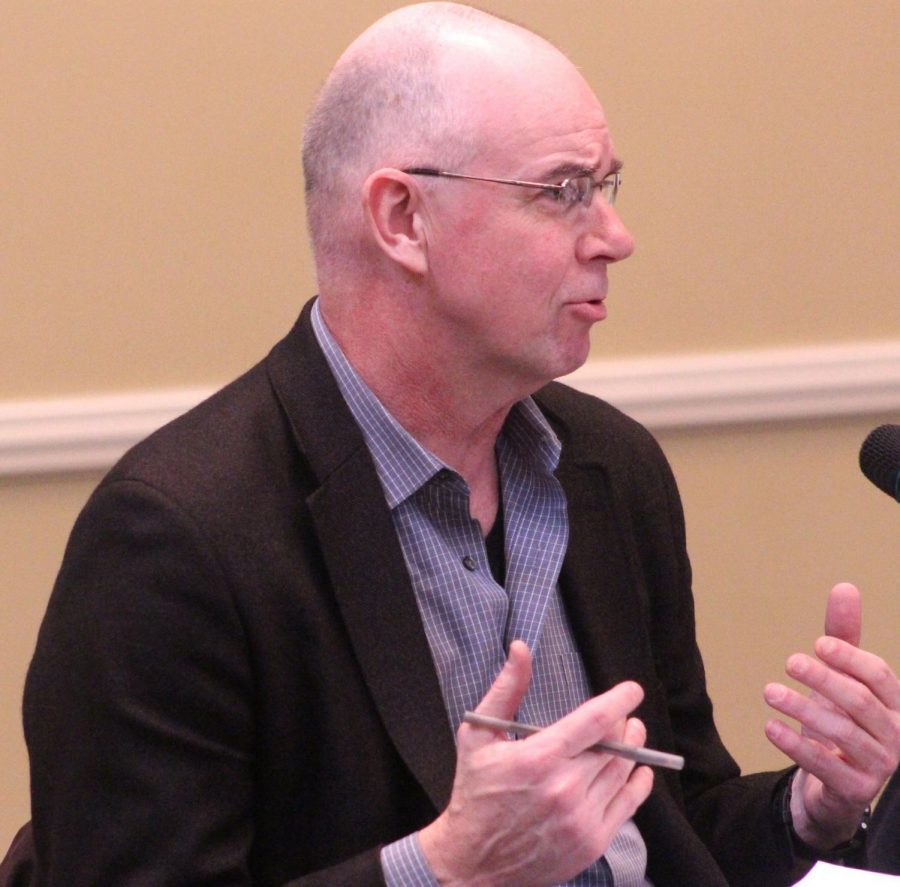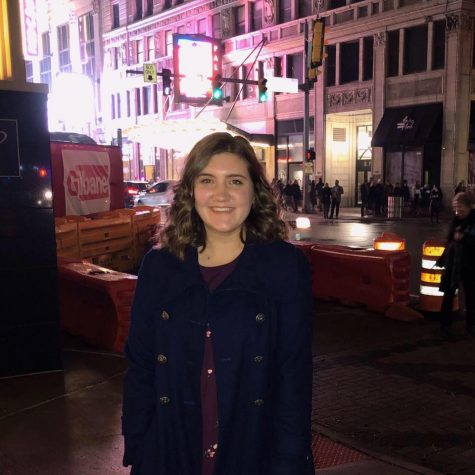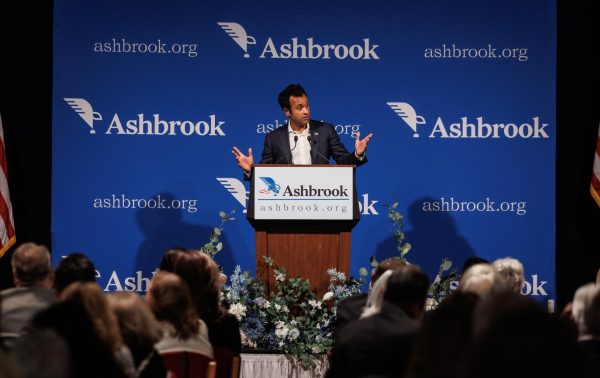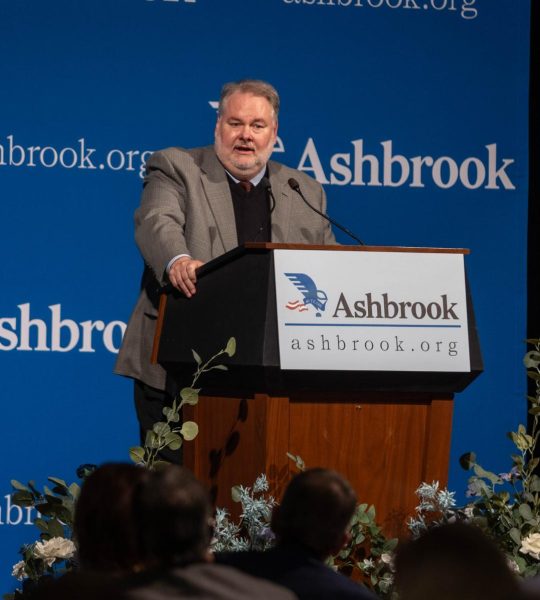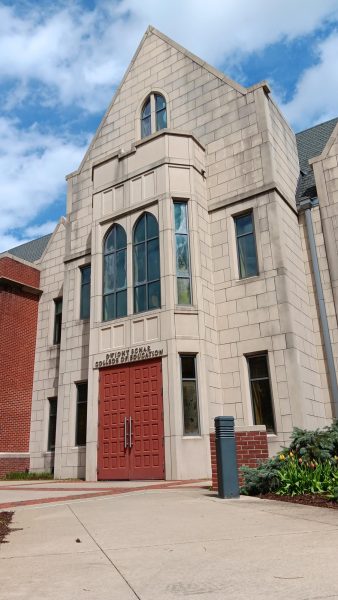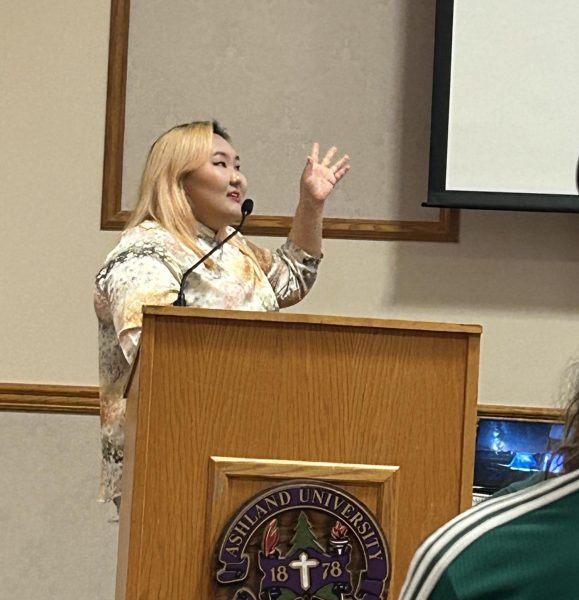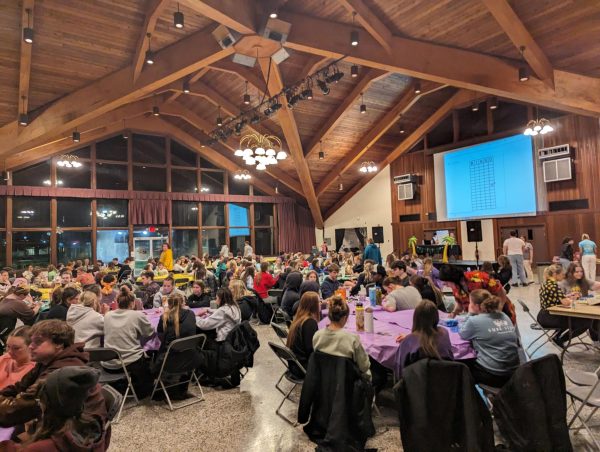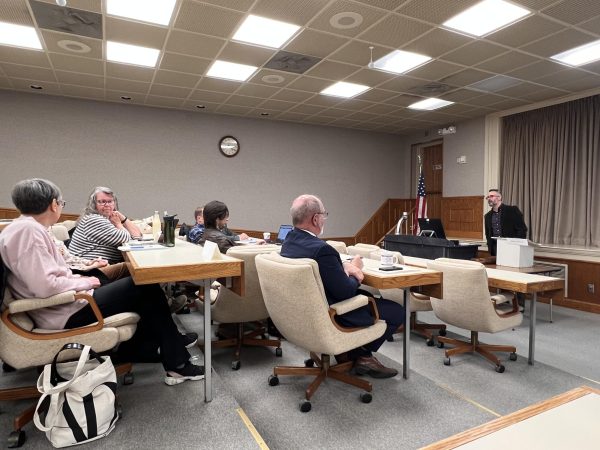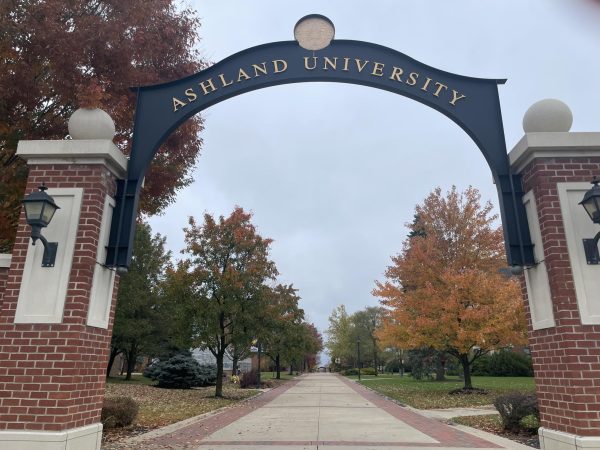Panelists discuss gun violence and social trauma
Jordan Ballard, policy analyst at Ohio Disability Rights Law and Policy Center, speaks to members of the audience about online gun sales and rights of owners.
February 20, 2020
The Ashland Center for Nonviolence hosted “A Conversation on Gun Violence and Social Trauma,” with the Ashland Mental Health and Recovery Board co-sponsoring the event, which was held on Feb. 13.
Dr. Craig Hovey, director for the Center of Nonviolence and religion professor, moderated the event and drafted the questions for the four panelists. Those who sat on the panel were: Dr. William Vaughan, AU professor of philosophy, Dr. Allyson Drinkard, assistant professor of criminal justice/sociology, Steve Stone, executive director of the mental health and recovery board of Ashland County and Jordan Ballinger, policy analyst at Ohio Disability Rights Law and Policy Center, Inc.
Each invited speaker had experience with either the gun rights aspect of the talk, or the mental health portion, contributing their knowledge and experience with the current views and perceptions on gun violence.
“It’s a problem without a clear solution,” Hovey said.
The purpose of the conversation was not to find a solid outcome for the way the law should be, but rather to offer a different side of the law and who it affects. The audience sat respectfully and asked questions regarding their own rights, rather than those of the group affected by social trauma.
“The gun violence topic is so entrenched,” Hovey said. “People have such strong views and predictable views when it comes to guns. You’re either for gun rights or you’re for gun control, so I think what gets me excited is how we can ask an unpredicted question.”
One of the topics brought up was regarding the shooting in Dayton last fall. Nan Whaley, mayor of Dayton, met with Governor Mike DeWine, and the Governor emerged from the meeting and later called for Red Flag laws in Ohio.
The purpose of the law is to restrict gun access to people who are deemed dangerous to themselves and others. The law, overall, was met with a lot of agreement across the spectrum, Hovey said.
While a lot of people thought it was good, and progress was being made, Hovey said he worried about the act of scapegoating a minority group of the population.
Stone is interested in understanding mental illness through the lense of trauma, and tied his talk into the concerns of Hovey.
Stone said in the discussion that keeping people affected by mental and social trauma off the streets will not solve the shooting issues. “It will only isolate people from the community,” he said.
With the addition of Drinkard, a social science expert, she added that the leading death of children in the United States is through gun related activity. She said that impulsivity and past experience is often what drives the situations in which people pick up weapons or consider harming themselves or others.
Some of the questions posed were: how does society react to trauma and violence on a mass scale? Are there dangers of reproducing the violent episodes?
Ballard was concerned about the rights being taken away, and tied in his talk to the different rights that were at risk of being restricted from citizens. He directed attention to the media’s portrayal of the extension of those rights.
Vaughn introduced the term, “trauma-feeding” to the conversation, which is the media’s desire and aim to cover traumatic events, which leads to sympathy from the reader and even trauma-related effects.
“Bringing people from different disciplines provides different answers and offers different perspectives to a common discussion,” Hovey said.
Hovey’s desire to have the conversation, was to introduce the topic in a new way, instead of repeating the debate that has been going on for years. By adding in the topic of social trauma, the conversation expanded and offered new perspectives for the audience to consider.



